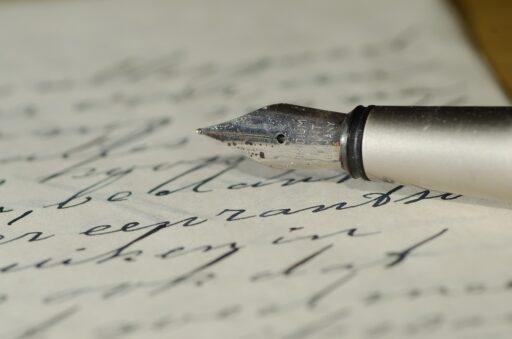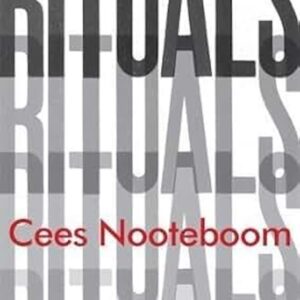In The New Yorker’s May 27, 2024, issue, Kathryn Schulz has a fascinating article called “Wait For It: Suspense in Literature and Life.” Her thesis is that every kind of literature—not just murder mysteries—is full of suspense. “In fact, outside of phone books and instruction manuals, it’s almost impossible to find a written work that doesn’t make use of suspense to captivate its readers.… As E. M. Forster noted in ‘Aspects of the Novel,’ every work of fiction, no matter how lofty, must be built around a story, and, qua story, it can have only one merit: that of making the audience want to know what happens next.’”
I happened to read Schulz’s article while my book group was reading British writer A. S. Byatt’s 1990 novel Possession. (As I write this post, I’m only about half-way through the novel, so I won’t be giving away the ending or even anything near it.) Possession’s plot focuses on some contemporary academics who are studying two fictional Victorian poets: Randolph Henry Ash and Christabel LaMotte. Roland Michell is studying Ash; Professor Maud Bailey is studying LaMotte.
At first, Possession’s suspense is just Schulz’s ordinary kind. Take the opening sentence: “The book was thick and black and covered with dust.” Of course, we want to know what this book was and why it was dusty. (We learn right away that it’s Roland who has requested the book at the London Library, where he’s working.) But before long, a second order of suspense emerges. Roland comes across two letters written by Ash to “Dear Madam”; naturally he wants to know who this “Madam” was, and so do we.
Wondering if she is Christabel LaMotte, Roland travels to Maud Bailey’s university—because he wants to know if Ash and LaMotte knew each other. And so begins the suspenseful drama that we as readers share with Maud and Roland.
Maud takes Roland to her library’s Women’s Archives and hands him the diary of LaMotte’s housemate, Blanche Glover. And right there, Blanche says, “we went out to breakfast” and “Ash the poet” was among the party. So we know that Ash and LaMotte had at least met. As we read on in Blanche’s diary, we become aware of her own intimacy with Christabel. “She kissed me, and called me her dear Blanche.…” So evidently they are more than just housemates.
Next Maud takes Roland to visit Christabel’s grave, where they meet Sir George and Lady Bailey (distant relatives of Maud), who invite them to their mansion—because Christabel had lived there about a century ago. Sir George leads them to what had been her room, closed up all these years, and Maud discovers there letters between her and Ash. Lady Bailey reads aloud the first and last couple letters—which together indicate that the two had indeed been close, but that their relationship had ended. So the suspense increases, equally for us as for Maud and Roland: what was the nature of their relationship, and why did it end?
Sir George and Lady Bailey invite Maud and Roland to return and read all of their LaMotte materials: poems, plus letters to and from her. Roland comes across a long letter to her from Ash, mostly about poetry. Byatt includes (i.e., herself has composed) this letter, in which Ash addresses Christabel as “my dear.” This ratchets the suspense up a notch: how dear is this “my dear”? (We’ve learned, meanwhile, that Ash was happily married to Ellen.)
Then comes what for me was the most grippingly suspenseful development so far: Byatt gives us an entire 47-page chapter, titled “Correspondence,” consisting of (yes) correspondence between Christabel and Ash. (I loved being thrust into the direct relationship of Ash and LaMotte—without the mediation of the scholars a century later.)
At first they address each other formally: “Dear Miss LaMotte,” “Dear Mr. Ash,” signing off with “Yours very truly, R. H. Ash” and “Your sincere well-wisher, C. LaMotte.” Their primary topic is their poetry—each admiring the other’s. For instance, Christabel notes that in their household of “we two solitary ladies,” “we have all your volumes,” which “are often opened and often discussed.” She sends him two of her own poems, and his response leads them into the typically Victorian debate over Christian faith: are the Gospels true? (her view) or more metaphoric (his view, since his belief is in “the life of the Imagination” given by God). They also discuss another frequent Victorian topic: whether there’s a difference between a woman’s creative imagination and a man’s.
After long letters talking about her idea of writing a poem about the mythic water fairy Melusina, she makes the first move indicating their increasing intimacy—by ending a letter “God bless and keep you—Christabel LaMotte.” To which he begins his next letter “My dear Friend.” But Christabel is alarmed. Though her reply begins “My dear Friend,” she fears “that there are dangers in our continued conversation.” “I reproach you with nothing—not myself either…but the world would not look well upon such letters—between a woman living in a shared solitude as I do—and a man—even if that man were a great and wise poet—” So, “do you not think it would better if we were to cease to correspond?” Ash is shocked and objects that they must continue. “I do not know—so quickly have you become part of my life—how I should do without you.”
At this point my heart was racing. The chapter had become a real page-turner: what was going on with their relationship? (I should mention that I generally do my fiction reading at bedtime. But reading these letters was so gripping that I had to wait until the next morning to continue.)
Christabel responds to his stated need for her by describing her life with Blanche, an artist: “My dear Companion and myself” have “renounce[d] the outside World…in exchange for a daily crafting”; and you, “dear Friend” are “a Threat” to this. Ash still forces the issue, because he has “come to perceive you as some sort of Muse.” But Christabel’s next letter expresses panic. “You Letters have not reached me…. They are torn to shreds, I am told.… This house—so happy once—is full or weeping and wailing….” And we assume that Blanche’s jealousy is the cause. Yet Christabel adds that she wants to meet Ash secretly: “I have an Apology to make that I wish to make in Person.”
Evidently they do meet, because in his next letter he mentions “holding your hand,” and that now he’s sending his letters to a postal address—though they’re both uncomfortable with “this subterfuge.” He’s now calling her “my dear” and “my Love.” “I have a wife, and I love her. Not as I love you.” She’s now signing her letters “Your Christabel” and “Ever, C” and addressing him as “Dearest Sir.” And their letters now indicate that they’ve been meeting frequently.
And then the letters stop. At least, Byatt gives us no more of them. What we do learn, two chapters later, is that Blanche killed herself in June 1860—a year after Christabel had joined Ash on a walking tour in the north. More suspense: what had happened on that excursion? I can’t wait for bedtime to find out. I’m going to continue reading the novel right now.
Peggy Rosenthal has a PhD in English Literature. Her first published book was Words and Values, a close reading of popular language. Since then she has published widely on the spirituality of poetry, in periodicals such as America, The Christian Century, and Image, and in books that can be found here.





